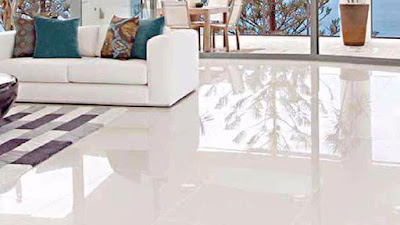How to pick floor tiles
Attractive, hard-wearing and easy to maintain, floor tiles are a good investment for your rooms and a practical choice. With our guide, choose the best.
Choosing tiles for the floor? A great choice of flooring for halls, kitchen diners, bathrooms, modern living spaces and even outdoors, floor tiles come in ever wider choice of style.
Choose from natural stone, such as terracotta, calcareous or marble, or from materials made by man, such as porcelain, ceramic or concrete. Find out all you need to know about floor tile products, floor tile installation and floor tile maintenance tips.
Natural Floor Tiles
Natural stone tiles have unique texture and colors, but are more likely than man-made materials to break or scratch, and may need to be sealed once laid–and resealed in future. Man-made materials are typically more economical and come in a variety of styles, but do not appear to have the quality of natural stone.
Natural Stone Tiles
Usually natural stone tiles come in raw, honed, or polished finishes. Natural surfaces tend to be matt with grain and pitting; smooth yet matt formed tiles; smooth shades of polished tiles. The higher the polish, the more water-resistant the tile will be but also the more slippery. Look out for materials of these natural stone tiles:
- Granite is very rough, available in many colors, and prevents scratching when sealed and polished. It can crack though. Ideal for living rooms, kitchens, and hallways.
- Marble is porous so choose finishes that are honed or polished, particularly in a kitchen. It's a good choice for bathrooms available in a variety of colors.
- Slate comes in a variety of deep, earthy shades and is robust. The surface is naturally textured, but the finishes are smooth and honed. A good kitchen, bathroom, and living room option.
- Limestone comes in earthy tones, and finishes both textured and polished. It can stain and scratch, so avoid placing it in areas of high traffic, such as kitchens.
- Travertine is soft and porous with a natural pitted surface, while tiles are available in shaved and polished form. It can scratch and stain, so periodically reseal and place in bathrooms instead of kitchens.
Man Made Tiles
- Ceramic tiles, which are typically more affordable than other tiles, come in a broad range of styles. These are a little more resistant to chipping and rubbing than porcelain tiles and will fit for most rooms.
- Glass tiles, provide the bathroom with a solid, durable, easy to clean floor. However, glass is sensitive to scratching, and falls when something heavy is dropped on it.
- Terracotta tiles, made of clay mix, but fired at a lower temperature for a more rustic look. We need sealing, which are available in a variety of earthy colors.
- Porcelain tiles are dense, smooth and impermeable make them ideal for all rooms, including the garden. They can mimic the appearance of wood, embossing patterns, natural stones, and even concrete.
Floor Tile Fitting
Installing tiles is a job. Just start by finding the center of the room and putting out the first four tiles with spacers around that point.
Then, lay out a few more tiles in each direction to ensure that you don't end up with any awkward, thin tile slivers at the room's edges. Once done, you should add adhesive to prevent it from drying out in small sections.
The difficulty comes in cutting, with some materials to be dealt with more trickily than others: porcelain is harder to cut than ceramic, and natural stone, particularly thicker tiles, is heavier than porcelain. It is therefore important to invest in material-specific tools for tile cutting. Then, if you've picked costly tiles, we would recommend calling in a specialist.
Cleaning and Maintaining of the Floor
Daily vacuuming or sweeping will help keep your tiles scratch-free, while quick cleaning of spills will help prevent staining. Man-made tiles may normally be mopped with a mild detergent for floor tiles, but use warm water only for natural stone to prevent the seal from being lost or dulled, or to ruin the appearance of stone.
To complement a large, contemporary or industrial-style room, choose large-format tiles; smaller tiles are great for a vintage look, homey in a more compact space. A typical look for the year ahead is bold colors or monochromes in graphic designs, as are wood-effect tiles in a parquet pattern.
Diagonally laying tiles will trick the eye into looking at the space as larger than it really is. Consider also how the tile layout on your floor can contrast with or complement that of your wall tiles.
If you're planning to buy Floor tiles in Bangalore, then Tileprint Showroom in the best place for you.



Comments
Post a Comment